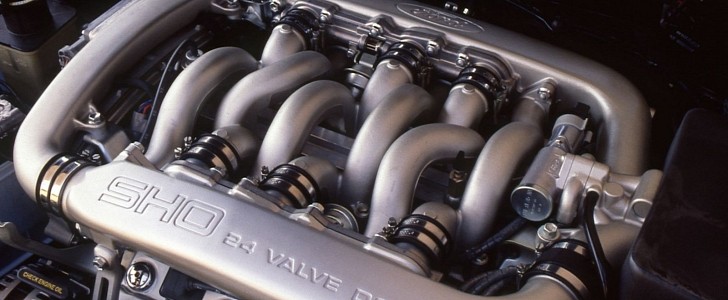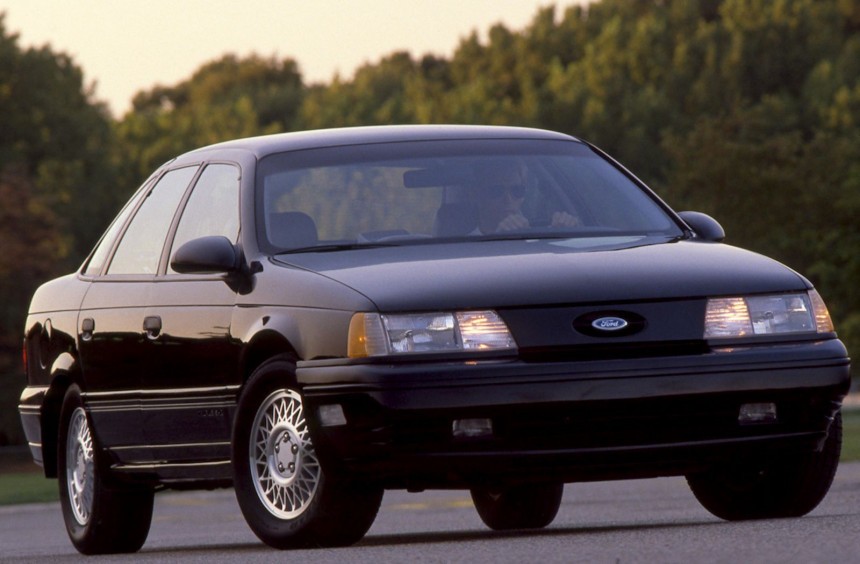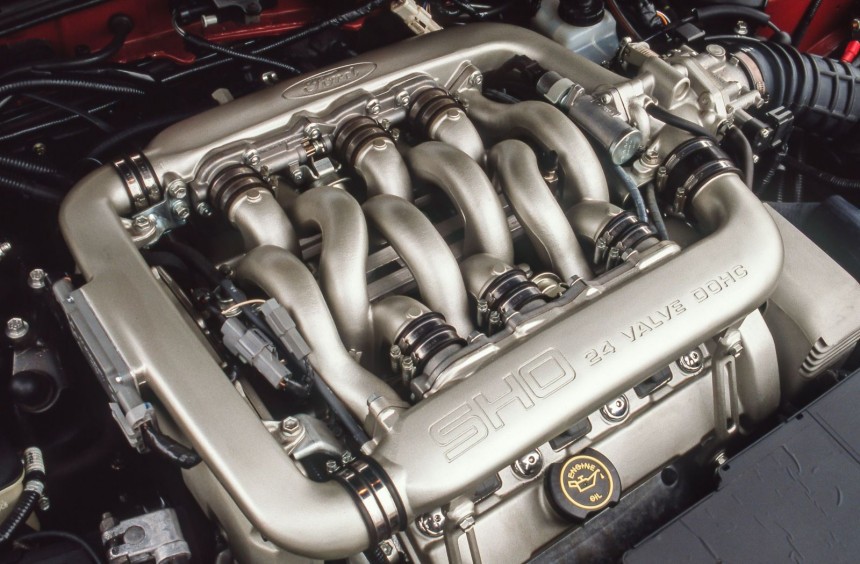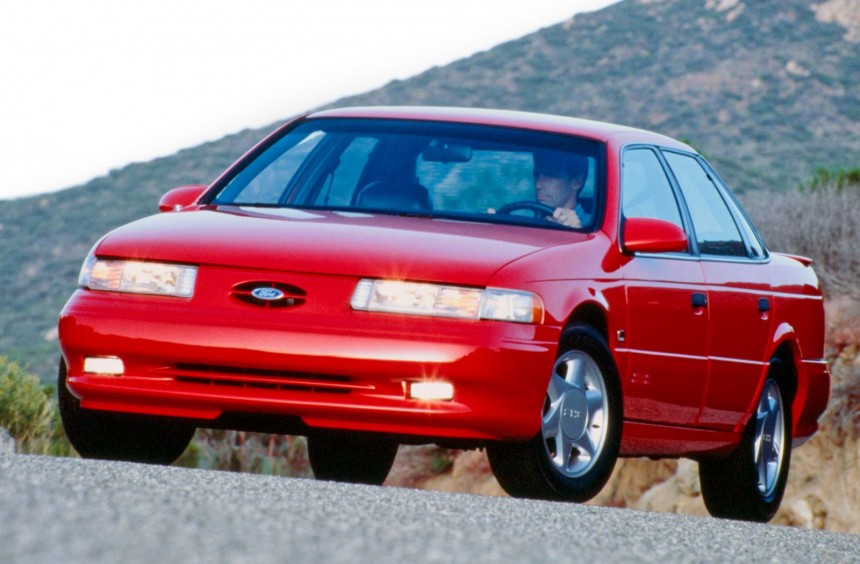Back in the 1980s, Ford decided to build a high-performance V6 and although the automaker had all resources required to develop one, they took the surprising decision of commissioning Japanese experts Yamaha to make it happen.
When it comes to motorcycles, ATVs, side-by-sides, or marine engines, Yamaha has been one of the world’s premier manufacturers for decades. However, few people are aware that the company’s engineering expertise was employed for automotive products on many occasions.
In the early 1960s, Yamaha helped Toyota create its first mass-produced V8, better known as the Japanese hemi. The collaboration between the two manufacturers continues to this day with an ambitious project to develop a hydrogen-fueled ICE.
Yamaha also built several concept cars – including the Formula 1 V12-powered OX99-11 – but none of them made it into production. Decades before an F1 twelve-cylinder came into being, the corporation embarked on another partnership with a carmaker, but this time, it was one of America’s greatest who came calling.
It all started in 1984, but unlike Toyota, who contracted Yamaha to design cylinder heads for their novel V8, the Blue Oval wanted them to develop, produce, and supply a compact, high-performance V6.
This joint project aimed to conceive a spectacular unit that could be mounted transversely into the engine bay of limited-edition, performance-oriented versions of Ford’s front-wheel-drive models also a Ferrari-killing, mid-engine sports car that was on the horizon at the time.
In Detroit, engineers were working on several new powerplants, one of which was a V6 codenamed Vulcan. This 3.0-liter served as the base for Yamaha, but the Japanese wizards worked their magic on the entire architecture.
While the displacement, the 60-degree cylinder bank angle or the 89 mm x 80 mm (3.5 in x 3.1 in) bore and stroke were retained, the motor dubbed Super High Output (SHO) received a redesigned, thoroughly strengthened iron block and a 24-valve, dual overhead cam (DOHC) aluminum cylinder head with a variable-length intake manifold dubbed by many a work of art.
These upgrades made it far more reliable, higher-revving, and consequently capable of producing more horses.
When it was introduced in 1989, under the hood of the Taurus SHO, it had a 7,000-rpm redline and a rated output of 220 hp. It turned the otherwise mundane sedan into a legit sleeper that could sprint to 60 mph from a standstill in around 6.5 seconds and reach a top speed of 143 mph (230 kph).
While those figures aren’t all that impressive nowadays, back then, this amazing V6 made 5 fewer horses than the Mustang GT’s fuel-injected, 5.0-liter V8. Moreover, the standard Vulcan 3.0-liter with its cast-iron head made only 140 hp and redlined at 5,500 rpm.
The powerplant’s displacement grew to 3.2-liters in 1993, but due to milder-profile cams, performance did not improve. The last unit was built in 1995 and although Ford considered fitting it into other models, the Taurus remained the only mass-produced vehicle that was blessed with this impressive motor.
Several prototype units were developed for the ultra-secret GN34, a mid-engine sports car project. The most advanced variant tested was reportedly capable of around 300 hp, yet, along with the entire project, its development was halted in 1986.
Forgotten by many, the Yamaha-built Ford SHO V6 was a marvel of engineering. Powerful, high-revving, but also extremely reliable and emission-compliant in all fifty states, it made the plebian Taurus as interesting as a BMW M5.
The collaboration between the two companies continued with the all-aluminum SHO V8 that was released in 1996. Although it had two additional cylinders and incorporated many of the characteristics pioneered by its smaller sibling, the 3.4-liter only made 345 hp and was plagued by widespread cam sprocket issues.
In the early 1960s, Yamaha helped Toyota create its first mass-produced V8, better known as the Japanese hemi. The collaboration between the two manufacturers continues to this day with an ambitious project to develop a hydrogen-fueled ICE.
Yamaha also built several concept cars – including the Formula 1 V12-powered OX99-11 – but none of them made it into production. Decades before an F1 twelve-cylinder came into being, the corporation embarked on another partnership with a carmaker, but this time, it was one of America’s greatest who came calling.
This joint project aimed to conceive a spectacular unit that could be mounted transversely into the engine bay of limited-edition, performance-oriented versions of Ford’s front-wheel-drive models also a Ferrari-killing, mid-engine sports car that was on the horizon at the time.
In Detroit, engineers were working on several new powerplants, one of which was a V6 codenamed Vulcan. This 3.0-liter served as the base for Yamaha, but the Japanese wizards worked their magic on the entire architecture.
These upgrades made it far more reliable, higher-revving, and consequently capable of producing more horses.
When it was introduced in 1989, under the hood of the Taurus SHO, it had a 7,000-rpm redline and a rated output of 220 hp. It turned the otherwise mundane sedan into a legit sleeper that could sprint to 60 mph from a standstill in around 6.5 seconds and reach a top speed of 143 mph (230 kph).
While those figures aren’t all that impressive nowadays, back then, this amazing V6 made 5 fewer horses than the Mustang GT’s fuel-injected, 5.0-liter V8. Moreover, the standard Vulcan 3.0-liter with its cast-iron head made only 140 hp and redlined at 5,500 rpm.
Several prototype units were developed for the ultra-secret GN34, a mid-engine sports car project. The most advanced variant tested was reportedly capable of around 300 hp, yet, along with the entire project, its development was halted in 1986.
Forgotten by many, the Yamaha-built Ford SHO V6 was a marvel of engineering. Powerful, high-revving, but also extremely reliable and emission-compliant in all fifty states, it made the plebian Taurus as interesting as a BMW M5.
The collaboration between the two companies continued with the all-aluminum SHO V8 that was released in 1996. Although it had two additional cylinders and incorporated many of the characteristics pioneered by its smaller sibling, the 3.4-liter only made 345 hp and was plagued by widespread cam sprocket issues.













